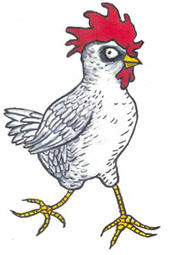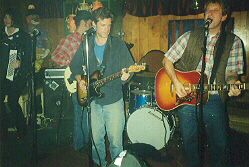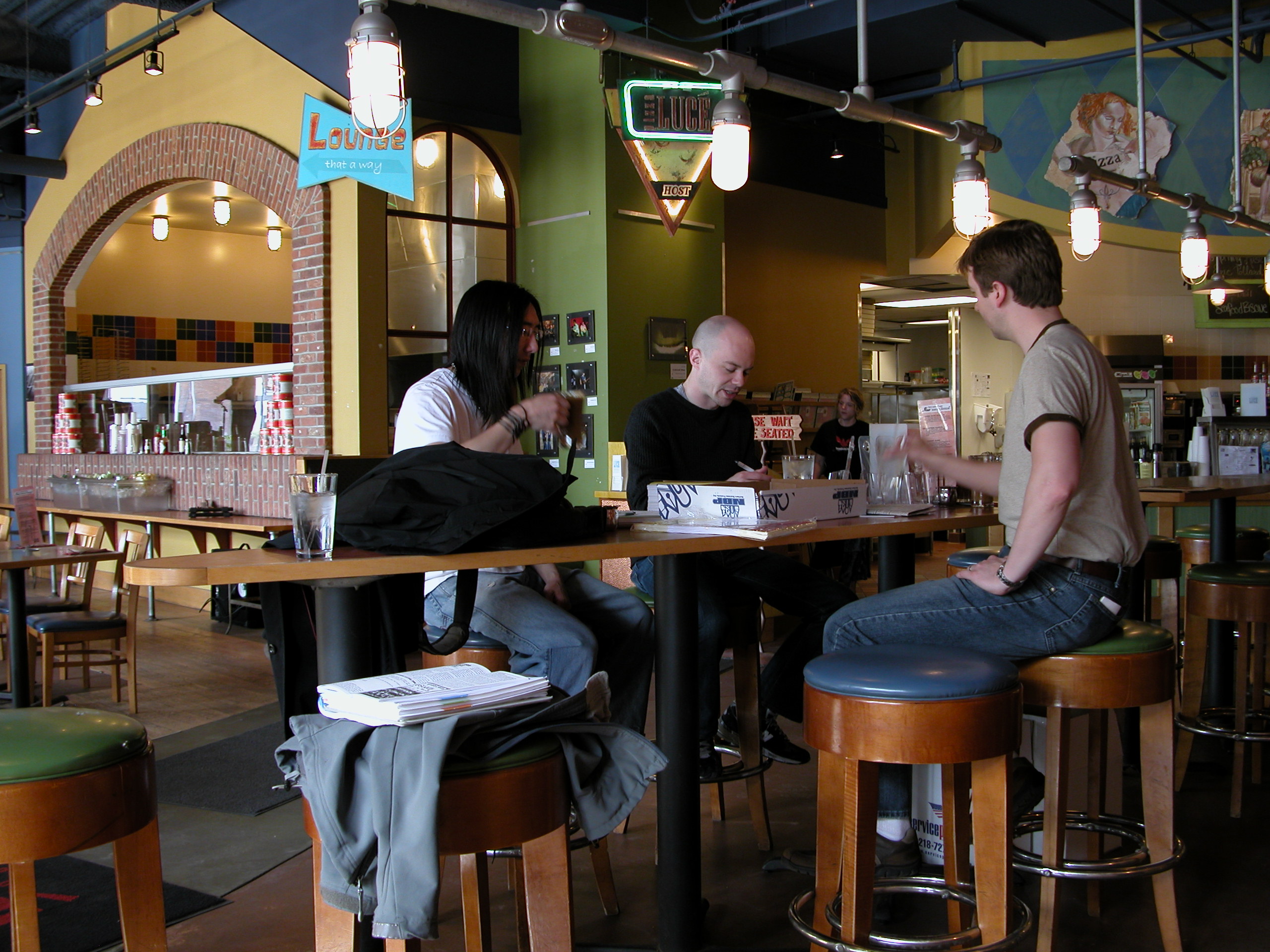Deep Melancholy and Boundless Creativity: Duluth Does Itself Again
Chris Godsey inaugurates our new monthly music column, "Mix Tape," with this in-depth take on Duluth's Homegrown Music Festival and its effect, past and future, on the culture of the city. It runs from April 30 through May 8.




Duluth’s 8th Annual Homegrown Music Festival–eight days, 113 acts, and 121 performances–is guaranteed to bring about sleep deprivation, drunkenness, serious second-hand smoke ingestion (and a contact buzz or two). Impatience with an endless cycle of setting up, pretentious pre-song explanations, tearing down, etc., is possible.
And every aspect of that excess is gorgeous.
Sunday through Wednesday will be a mellow cruise. Then the Homegrown Hempen Ale will be uncasked during Thursday night’s Starfire Lounge, and the next 60-odd hours will consist of constant careening between venues and genres–RT Quinlan’s for sincerely ironic hair metal; The Tap Room for Minnesota’s Northernmost Rap Group; the Brewhouse for lots of acoustic strumming. By late Saturday–when you realize that Father Hennepin won’t be playing at midnight like they have every Homegrown since there was a Homegrown–you might be exhausted and loopy enough to weep. By Sunday morning’s Pizza Luce brunch, you should be miserable in that really pleasant all-over way.
It’ll hurt, but good. And if the folks in charge of the festival have their way, such self-abuse will be possible every spring for perpetuity.
A BRIEF HISTORY OF THE HOMEGROWN UNIVERSE
When Scott “DJ Starfire” Lunt turned 30, in 1998, he and his band Father Hennepin and some of his other favorite local acts played for friends on Duluth’s Park Point. The next year Starfire and a few more of his friends did the same stuff on the same weekend, except at the NorShor, and with posters and a name: The Homegrown Music Festival. Starfire ran the thing–gradually expanding it to more than 70 acts–till 2005, when he sold it to local entrepreneurs Tim and Brad Nelson; they put on a 90-act weekend last spring, then donated the name and whatever else comprises a festival to the city’s Bridge Syndicate, a non-profit devoted to keeping young adults in Duluth by creating cultural and professional opportunities.
So this is Homegrown’s first year as an official non-profit festival, although in years past it’s cost its organizers a fair amount of money. Syndicate co-founder, Duluth City Councilor, and Homegrown Steering Committee member Don Ness says that shouldn’t happen any more.
HOMEGROWN, MEET THE MAN. THE MAN, MEET HOMEGROWN
“We’ve got great foundational and business support,” Ness says. “But the spirit of Homegrown is still exactly the same–it’s a lot of volunteers doing a lot of work for the community.”
As Ness, Steering Committee member and musician Jonathan Livingston, and music-scene stalwart Jon Choi hung out at Pizza Luce just after 10 on a Saturday morning in early April, they discussed logistics, handed out festival posters to volunteers who would post them throughout Duluth and small surrounding towns, and talked about how this year’s Homegrown is unique.
“We thought larger than the festival has in the past, in terms of support,” Ness says. “We explored what would happen if we asked the Holiday Inn and Fitger’s and other businesses for support, instead of just the Electric Fetus and Ragstock and the typical supporters of something like this event?”
The Homegrown Field Guide does include ads from the Fetus and Ragstock and other business favorites of Duluth’s underground arts community, but it’s also getting money from the City of Duluth, Minnesota Power, real estate developer Sherman Associates, and other entities barely even peripherally associated with Homegrown or the scene that spawned it.
Livingston says, “I’ve been amazed at how many major stakeholders in the community, on multiple levels, have shown magnanimous support. That didn’t always happen in the past. I think part of that support is how we framed our approach.”
Another part is how The Scene and The Bridge Syndicate fill cultural and social gaps. Ness wouldn’t name himself as that connection’s lynchpin, but he is–very few other people in town have his ability (or desire) to move smoothly through city politics, business-networking events, and late-night-rock-show culture.
“When the Bridge Syndicate took ownership of the festival, we recognized that we couldn’t put it on by ourselves,” says Ness. “We just didn’t have enough of the right kinds of connections. So we said, ‘Let’s form a steering committee mostly of artists.”
The 10-member volunteer committee coordinated festival public relations, artist outreach and scheduling, logistics with at least 16 venue managers, fund raising, and other details; according to the Field Guide, it grew “so large that the original committee is mostly in charge of forming subcommittees.”
“You can’t deny the importance of having Don Ness on the Steering Committee,” says Livingston. “He adds greater credibility and access to a lot of places we otherwise wouldn’t have gotten. His involvement has dramatically opened new crowds to the festival.”
Those crowds don’t just include The Man.
BLESS THE BEASTS AND THE CHILDREN AND PRETTY MUCH EVERYTHING ELSE
“Don helped us acquire the Electric Fetus ballroom for the all-ages shows”–7 to 11 p.m. shows on Friday and Saturday–says Choi, who’s part of a small collective called Dull Punk. “Actually, he did get it for us.”
“We basically had to create an all-ages venue,” Ness says. “Everything, from a stage and sound to figuring out how to get refreshments. We felt it was important to provide it.”
The Retribution Gospel Choir is scheduled to open for the Ice Cream Socialists on Friday, and youthful mayhem should ensue.
But…
“This is what I’ve discovered about working with teenagers,” says Choi: “They don’t always make the best decisions. Like jumping out of a moving car at 65 miles per hour, which the Ice Cream Socialists’ drummer recently did. But I guess that’s punk rock.”
Homegrown week will also include a somewhat sedate Sacred Heart Feature Concert at a former cathedral turned music recording and performance space. Piedmont blues singer and guitarist Charlie Parr will open for The Three Altos–a rabbi, sexologist, and folk singer (no joke) with low voices and ethereal harmonies–who will open for Trampled by Turtles and their pleasant, Duluth-inspired version of something like bluegrass.
The next night is Collegiate and Soup Town Night, featuring shows in the University of Minnesota Duluth’s Kirby Ballroom and the Red Mug Coffee House and Twin Ports Brewery in Superior. The combination is apropos, because many UMD students actually take Superior Debauchery as an elective lib-ed course.
“The idea was to include UMD bands in the festival, and to expose UMD students who live and spend most of their time on campus to the scene,” says Steering Committee member, UMD sophomore, and musician Dave Mehling. “Homegrown is the week before finals, but Late Night Kirby [a campus organization that puts on shows] has its own promotion budget, and there’s a lot of promotion going on, so lots of students should know about it.”
Ness says, “We knew we wanted to reach out to at least one campus. We knew we wanted to reach a maybe older demographic, with something like the Sacred Heart show. We didn’t set out to fill the week; we just had lots of stuff.”
“We definitely intended to open the festival to media beyond music,” says Livingston. “It was an easy, seamless transition. There’s so much crossbreeding among art forms in town. There are definitely atomized cliques, but there’s a lot of overlap in the overall scheme of things, which really produces the sense of a collective.”
Some ideas didn’t quite pan out, says Amy Abts, who co-chairs the committee with Duluth and Minnesota music icon Alan Sparhawk: “Jonathan and Alan kept wanting to have some sort of run”–as in a 5k race. “Everyone else kept asking, ‘how many people are going to come out for a run after staying up all night?'”
As it stands, Homegrown’s only intentionally athletic component will be a kickball game, pitting Friday artists against Saturday acts, at high noon on Saturday. Friday has never won.
A MOMENT OF SILENCE, PLEASE…
And ever since Starfire’s 30th birthday party in 1998, Father Hennepin has never not played at midnight on Homegrown Saturday. It’s like a tradition or something.
But, according to Fat Hens founding member, guitarist, and singer Ted Anderson, “All things are ephemeral.
“We are but fleeting assemblies of molecules…
“The droplets of mist always return to the river.”
Long pause.
“We didn’t get organized enough to rehearse, and we’ve been playing the same set for about four years, and it’s tough to get excited about that.”
Father Hennepin will not play this year’s Homegrown.
“I have deep melancholy about it,” says Anderson. “But I accept that all things must pass. And I’m excited about my new band, the Tangier 57s, also known as Triangle Pants.”
The T-57s are, says Anderson, a psychedelic lounge act featuring keyboardist Darren Bergsven’s 1970s-vintage Aquarius organ outfitted with an adequately stocked bar–gin, vodka, dry vermouth, garlic-stuffed olives, swizzle sticks, and a couple shakers.
“The organ embodies our identity,” Anderson says. “We’re not afraid of rendering ’80s glam tunes or taking ’60s bad trip psychedelic music and turning it into buttery and palatable and sophisticated.”
GOOD NIGHT, AND SEE YOU NEXT YEAR!
“Since this was Homegrown’s eighth year,” says Abts, “we wanted it to be big but not too big. I think we have just the right amount of bands and venues, and the activities and events we’ve added should help people who haven’t been involved with the music scene get involved.”
She and Ness say there are no plans to expand, as Homegrown has every year since it started, but to sustain and improve its current state.
“Having a committee was really positive,” Abts says. “Don took the initiative to get things started early, and that made everything fun, not stressful. One goal for this year is to have everything set up for next year, and to put any profits back into the festival. I don’t know how it can go bigger. Our goal right now is to have the festival every year, and to keep people involved.”
“It’s our goal to get better at what we do,” Ness says, “not to get bigger and broader.”